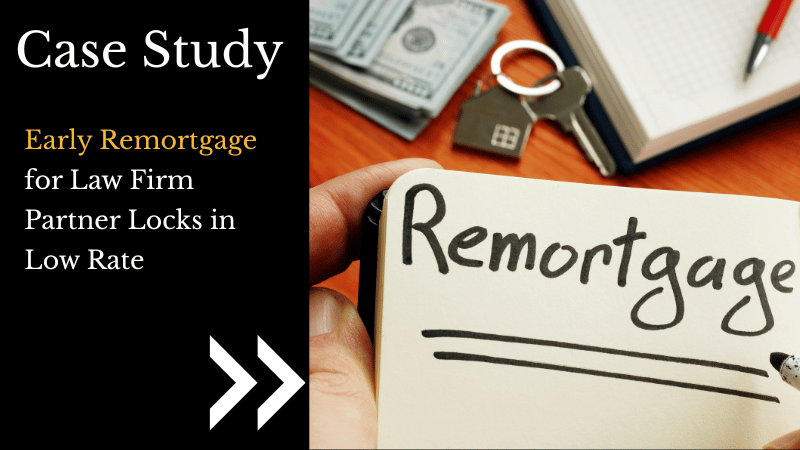Categories
How Early Can I Switch My Mortgage? (6 Month Windows)

When your fixed rate mortgage starts to come to the end of its term, it’s important to start planning for the future.
Doing nothing will result in your mortgage rolling onto the lender’s standard variable rate (SVR), and with SVR rates almost always higher than the other offers available, it’s never a good idea - you could end up throwing hundreds of pounds away each month simply by not switching your mortgage in time.
At Clifton Private Finance, we’re here to help you get the most out of your mortgage - getting your rates low is the very first step!
Key Takeaways
- Forgetting to switch your mortgage rate can see you overpaying interest by hundreds of pounds every month.
- A larger mortgage switch window gives you more flexibility to get the best rate - some banks offer up to 6 months early.
- You can either switch by using a product transfer, keeping the same lender, or remortgage to another lender.
- Working with Clifton Private Finance will help you get the best rate on the market.
Table of Contents
Find the Perfect Mortgage
The Impact of Mortgage Interest Rates
Interest rates are everything when it comes to your mortgage, typically (although not always) outweighing any product fees associated with certain deals.
Consider a larger mortgage of £400,000 that goes from a fixed rate of 4.86% to a sudden SVR of 7.80%; the monthly rise there is over £700 per month (from £2,305.85 to £3,034.46) - a devastating hit on your bank balance.
Mortgage rates matter - that’s why at Clifton, we recommend paying attention to your mortgage as it approaches the final few months of the term. There’s lots to lose if you stick your head in the sand.
How Does Switching My Mortgage Work?
There are three main options when you reach the end of your mortgage term:

Rolling onto the SVR
As described, this is almost never a good idea but will happen by default if you do nothing, leaving you scrambling around trying to make a switch while the interest piles up around you. Taking action while you are in your mortgage switch window is essential.

Using a product transfer
A product transfer is when you remain with your current lender and move from your existing mortgage product to another one offered by the same bank.
Product transfers are easier to administer as you are already a customer with the bank and have an established history with them, however, they are rarely the very best rate available on the market so some comparison with other options is always worthwhile.

Remortgaging
Remortgaging at the end of your term is when you look at the whole of the mortgage market and select a new mortgage product with another lender, often securing the best possible mortgage rate available.
However, a remortgage does involve additional paperwork and new affordability tests, making it a longer and more complicated process than the other options.
Why the Mortgage Switch Window Matters
Mortgage rates change regularly. When times are turbulent, as we have seen over recent years, mortgage rates can rise on a daily basis, making the deal you plan for today gone by tomorrow.
However, lenders do what they can to help their customers have a stable mortgage, and the mortgage switch window is one of those tools.
The mortgage switch window is always in your favour because if a better deal becomes available a little later, if you’re still in your window you can drop your first choice and select the better deal instead. With a close eye and some good management, you can make sure that you get the best possible rate that’s available during your mortgage switch window.
Trying to switch before the window opens will mean you are subject to early repayment charges (ERCs), while switching too late will see you rolling onto the expensive standard variable rate (SVR) - the mortgage switch window is your best opportunity to find a new deal.
Lenders’ Mortgage Switch Windows
Different lenders offer different windows. It is in the lender’s interest to have as short a window as possible, but they balance this against making sure they are fair to their customers. Typically, the window will be changed by the bank every year or so (though it may be faster) to reflect the stability of the wider economy.
The Top 5 Tips to Get a Better Deal
1 - Understand What You’re Looking At
It’s essential that you understand what the various terms mean, what your current deal is, and how to best balance the options. Take a little time to get your head around each of the variables so you can make a more informed choice.
These include:
- Interest rate / mortgage rate - This is the amount of interest you will pay on the loan, and the bigger the interest, the more you are paying. Even small changes make a big impact and even if there’s only a tenth of a percent difference, there are still savings to be made.
- Monthly repayment - This can be calculated based on your mortgage balance, your interest rate, and the term of your mortgage.
- Early repayment charges (ERCs) - These are additional fees that will be charged if you are outside your switch window. Worth considering for your longer term planning.
- Fixed rate - This means your interest rate is set for a set number of years (usually 2, or 5). Fixed rate mortgages are usual and keep your monthly payments the same until the next switch window occurs.
- Current term - This is the number of years left on your current mortgage deal. At the end of your term is when your switch window opens up.
- Standard variable rate (SVR) - This is the base interest rate for your lender that your mortgage will revert to if you do nothing. It is usually higher than the other options.
- Loan to value (LTV) - This is the ratio of your mortgage against the value of your home - for example, a £200,000 mortgage on a £300,000 property has an LTV of 66.7%. Low LTVs are less risk for the lender and have better rates than higher LTVs.
2 - Explore the Marketplace
Starting with the product transfer options offered by your current lender, explore the mortgage products on the marketplace - you can only choose the best deal if you know what’s out there.
Remember, that if you stay with your current lender, the process is a lot smoother but you may not be getting the best deal available.
3 - Use Your Whole Switch Window
From the opening of your mortgage switch window, you can start reviewing and locking in deals. This means you can evaluate the options, secure a rate early, and relax, knowing that your new mortgage is in place.
Bear in mind that because of the time it takes to complete the application, with legal considerations and affordability checks, your window for a remortgage to a new lender is tighter than for a product transfer.
4 - Balance Convenience with Long-Term Savings
Choosing the best deal isn’t just about the best interest rate - though that’s usually the greatest factor. When choosing between staying with the same lender for a product transfer, or moving to a new lender with a remortgage, you should also take into account other considerations, such as:
- Administrative convenience
- The need for new credit checks and affordability evaluations
- The cost of legal fees and arrangement fees
- Length of fixed rate term
- Early repayment charges
While there may be long-term savings to be made by choosing a different lender, many homeowners choose to remain with their current lender for convenience alone.
5 - Speak to Clifton Private Finance
If evaluating all the different considerations and fine nuances of mortgage choices fills you with dread, we do understand.
At Clifton Private Finance, our mortgage team work tirelessly to scour the ever-changing UK mortgage landscape, finding the best deals, building relationships, and evaluating the options against the entire marketplace to get the very best for our customers - and it’s a full-time job!
If your mortgage switch window is coming up, with the end of your current rate in sight, don’t panic - give our specialist mortgage team a call.














